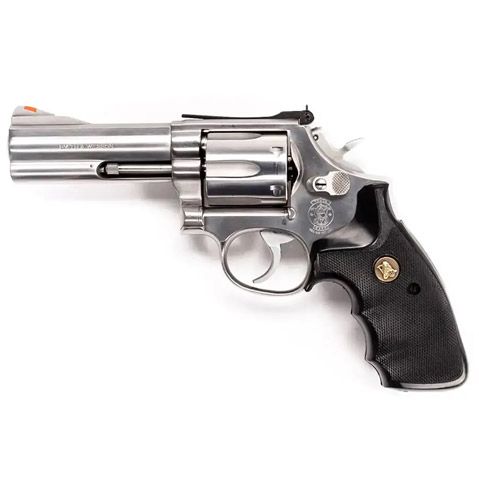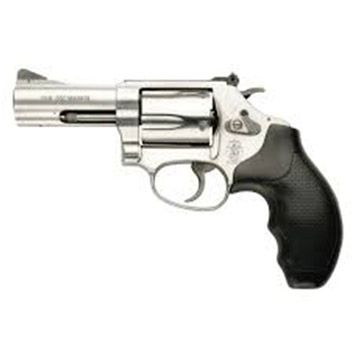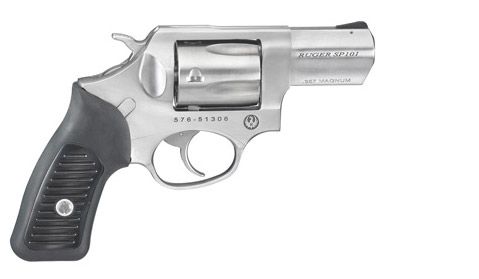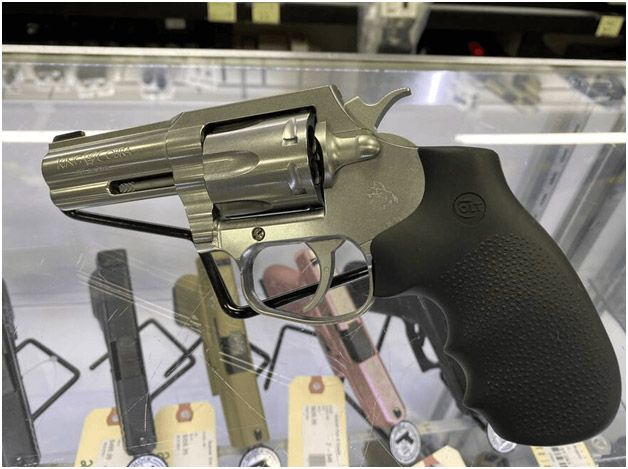At a Glance: Best .357 Revolvers
- OUR TOP PICK: Smith & Wesson Model 627 Pro Series
- Model 5033 Ruger Redhawk .357 Magnum
- BEST BUDGET OPTION: Ruger GP100 .357 Mag
Comparison of The Best .357 Revolvers
| PRODUCT | DETAILS | ||
|---|---|---|---|
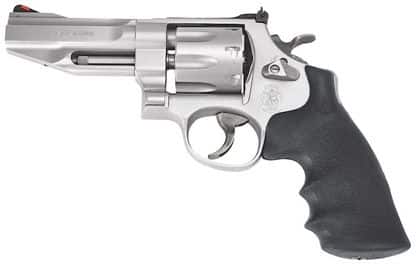
Our Top Pick
|
Smith & Wesson Model 627 Pro Series |
|
View Latest Price |
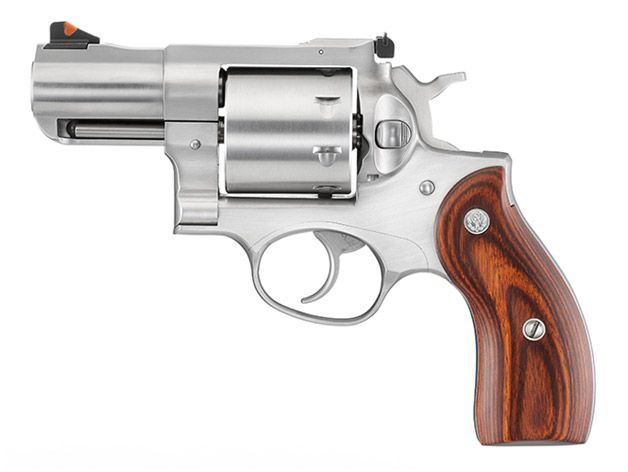
Our Top Pick
|
Model 5033 Ruger Redhawk .357 Magnum |
|
View Latest Price |
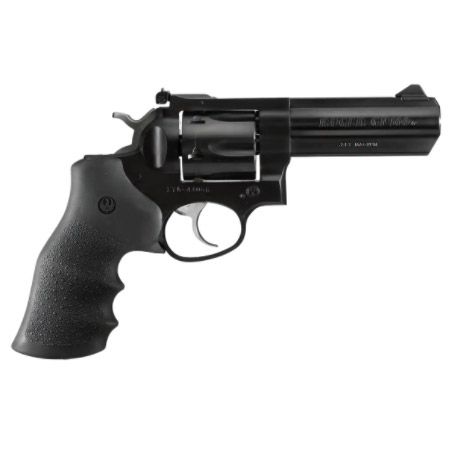
Our Top Pick
|
Ruger GP100 .357 Mag |
|
View Latest Price |
If you’re looking for something that never goes out of style, what better choice than a .357 revolver! A go-to for many gun enthusiasts, revolvers have sleek designs and proven reliable performance. Whether you’re a first-time buyer or looking to upgrade, here are a few of the best .357 revolvers of all time.
Unsurprisingly, all brands and models seem to make claims of being among the best .357 revolvers in the market. Choosing the one that feels right for you can, thus, be overwhelming.
In this article, we’ve rounded up information on powerhouse revolvers to help you decide with confidence.
The Top 8 Best .357 Revolvers
Smith & Wesson Model 627 Pro Series
The Smith & Wesson Model 627 Pro Series is an excellent double-action revolver built on an N-frame. An all-stainless steel design chambered in 357 Mag, this revolver is not your average rail. When it was first introduced in 1989, it featured a 6-round capacity. Sometimes referred to as “the Model of 1989”, its capacity was upgraded to a total of 8 rounds in 1996. This gun easily joins the list of the best .357 revolvers.
Aesthetically, the 627 has a distinct look. It has a 4-inch barrel with an end that is beveled. Both the hammer and the trigger are case-hardened.
Coming in either synthetic or wood grips, this revolver is a top choice among shooters and handgun enthusiasts. You’ll be impressed by the gun’s trigger pull, which boasts a heavy-action squeeze that is consistent and smooth. With this revolver, it is easy to shoot, and you can maintain the accuracy level that you are aiming for even when you are firing double.
Since it is a revolver, expect that it doesn’t have an external thumb safety. Still, as expected from Smith & Wesson, they managed to incorporate a safety feature through a built-in lock. You’ll find a tiny keyhole in the cylinder release to lock the revolver when not in use.
The 627 is good for hunting. However, concealing it and finding a holster are a little difficult, given its size.
Pros
- Excellent trigger pull
- With safety lock feature
- Holds 8-shots
- Great overall appearance
- Useful for hunting
Cons
- Concealment issues due to size
- Challenges in finding the right holster size
Model 5033 Ruger Redhawk .357 Magnum
Completely rugged, the Ruger Redhawk 5033 revolver has a reputation that is hard to beat.
With its 2.5-inch snub nose barrel and 8-round cylinder, this model is ideal for everyday use and carry.
The cylinder itself is a beauty. It is cut for moon clips and ideal as an aftermarket promotion for the brand’s holsters. The grip is a beautiful rosewood with the exclusive Ruger medallions inset. Owing to its design, this model feels good in the hand.
This stainless steel revolver is a mainstay for many shooting enthusiasts. With its clear, red front sight insert and manageable recoil, the Redhawk can produce an excellent trigger pull. Despite its weight and size, the revolver has an accuracy that is on point.
In terms of drawbacks I find it quite heavy, and its size is massive compared to other revolvers. The gun’s weight in the waistband may need some time getting used to. Although it’s on the chunkier side, the action trigger remains consistent and smooth. Also, the grip does not have any rubber medium to help absorb the recoil. That being said, it’s still one the best .357 revolvers around.
Pros
- Beautiful rosewood grip
- Holds 8-shots
- Excellent trigger and manageable recoil
- Above-average accuracy
Cons
- Heavy and not for everyday carry
- Lacks rubber on the grip to help with recoil
Ruger GP100 .357 Mag
If you want a revolver known for its consistent accuracy and dependability, look no further. The Ruger GP 100 .357 Mag is everything you need!
This model features a smooth and double-action trigger pull made of strong steel that is corrosion resistant. Maintaining this revolver is a breeze: having no side plate, it can be broken into several subassemblies without the need for tools.
Keen on safety, the Ruger brand has incorporated an exclusive transfer-bar mechanism that prevents any accidental discharges. The model also has a triple locking cylinder, which provides positive alignment after every round.
The revolver’s textured Hogue Monogrips with finger grooves guarantee a secure grip with every shot. The revolver also boasts a manageable recoil.
Perfect for home security, self-defense, outdoor carry, and target shooting, this U.S.-made revolver is a wonderful addition to your collection.
The only drawback is its overall build. It is heavy, big, and it also has some rough edges on some of its parts (for instance, its trigger).
Still, the Ruger GP 100 is one of the best .357 revolvers available today hands down.
Pros
- Corrosion-resistant
- No special tools required for maintenance
- Comes with Hogue Monogrips
- Made in the United States
Cons
- Heavy and big
- Some sides and parts are sharp
“S&W” Model 686
The Smith and Wesson 686 is part of the brand’s L-frame revolvers, which are designed for serious firearms aficionados. With a lineage dating back to 1981, this revolver is considered as the stainless version of the original blued Model 586.
Model 686 is available in 6-shot or 7-shot strong, durable cylinders. The barrel is built for uninterrupted magnum use. Police and law enforcers, as well as hunters, can attest to this gun’s ability to withstand heavy use. It is intended to be a “go-to and must-have revolver” and not as a display piece.
This revolver has rubber grips and finger grooves that allow for a comfortable grip. Its double-action trigger has a pull weight that is just around 10 pounds. If single action, the trigger further drops to just 4.3 pounds.
However, its design is beefier compared to other revolvers. It is heftier, especially toward the muzzle, so one may struggle with the balance when using it. But the balance does not impact the model’s accuracy. Additionally, because of its design, this revolver is not for concealed carry. If you’re looking for the best .357 revolvers, this beautiful gun needs a serious look.
Pros
- Solid and durable frame
- Meant for everyday use
- Excellent rubber grips and finger grooves
- 6-round capacity
Cons
- Minor challenge with balance due to weight
- Not for concealed carry
Taurus 605PLYSS2 Polymer
A quintessential 5-shot revolver, the Taurus 605 is a 2-inch barreled snub nose revolver with small sights, a little grip, and a heavy trigger.
Unlike most of the Taurus’s semi-auto counterparts, this model is worthy of being in the frontlines.
It comes with two keys for the integrated locking mechanism found on the rear of the revolver’s hammer. The rubber grip’s size is adequate and it also covers the backstrap, providing cushioning to the blow when running a series of hot loads.
What this model lacks in size, it compensates with its shooting power and accuracy. Having a stainless finish, this revolver is also easy on the hands.
The front sights of the Taurus are nicely serrated. The trigger is smooth without any visible hitches. It works effortlessly through the revolver’s mechanics of retracting and rotating the cylinder, and with the release of the hammer.
Minor drawbacks though not deal breakers, would be that its spur is rather abbreviated compared to the other revolvers. As a result, this revolver may be harder to use when pressed for time. I’ve found its single-action trigger press a little heavy, so it takes time getting used to it. This gun is not ideal for concealment. Overall a great gun if you’re looking for the best .357 revolver.
Pros
- Small sights ad a heavy trigger
- Incorporated with a locking mechanism
- Accurate and feels great on the hands
- Smooth trigger
Cons
- A little hard to put into action
- Not for concealed carry
Smith & Wesson Model 60 .357 Magnum
With an all-stainless construction and its recoil reduced, this one can be classified in the ‘fun-gun’ category and meant for a pleasant shooting experience.
Being a Smith & Wesson revolver, expect this model to have a consistent and reliable recoil management, and quick follow-ups. An instant hit since 1965, it is one of the most well-known and the very first stainless steel revolver.
One adjective to describe the Smith & Wesson 60 is smooth. From its trigger pull to its cylinder release, it has zero snags. With proper use, this revolver will never scratch or blister the skin. Every gun enthusiast’s dream – the smooth and seamless trigger lets you have fast follow-up shots even if you are in double action mode. This alone earns it’s place on our list of the best .357 revolvers.
This revolver deserves another star because its 3-inch barrel gives lots of room for a full-length ejector rod. If you are into a working defensive revolver, this is a must-have.
This model, however, needs better grips so it’s easier to carry around. It is also twice as heavy as the lighter models.
Pros
- Reduced recoil
- Overall smooth performance
- Zero snag trigger
- Ideal for a full-length ejector rod
Cons
- Grips can be improved
- Weight is twice as heavy
Ruger Model SP-101
The SP-101 is another Ruger model. With its seamless details and effortless finish, it is considered to be among the best .357 revolvers available today.
This is the softest shooting 2.25-inch barreled .357 mag pistol today. The real-deal lady revolver, it is the ideal gun you’d want for a newbie, especially a woman. You’ll be surprised with the accuracy this revolver provides.
This Ruger has a short grip, making it perfect for concealed carry. The rubber grips, included with the plastic side panels, are excellent add-ons. With these grips, the revolver will securely stick to your hands, but not on your shirt.
When it comes to adjustability, you can modify the grips to either wood, rubber, Crimson Trace, or whatever you want to incorporate. If you are confident about your skills, you can also make changes on the front sight and even smooth the trigger. While most revolvers share these features, the SP-101’s real edge is its stainless steel construction. Its shape and edges will not hurt or give you the slightest scratch.
The Ruger SP-101 is not without drawback. It has a heavy build. Additionally, it requires more than two fingers to control the man-stopper rounds securely. It is also advisable to purchase a Hogue mono grip for better results. The sights are pretty minimal too.
Pros
- Exceptional adjustability
- Considered a woman’s powerful revolver
- Perfectly concealed
- Incorporated rubber grips
Cons
- Two fingers are not enough to control the man-stopper
- Minimal sights
Colt King Cobra 357 Magnum 6 Round Revolver
Colt is an iconic brand, and every gun enthusiast aims to include one in their collection. Of course it made the list for the best .357 revolvers!
The King Cobra 357 has a lot of similarities with the previously released 2017 Cobra. It carries the same internal lock work, sights, and grips. The model utilizes a leaf mainspring design. It is somewhat a tamed version of the Colt’s Python, but with an improved coil spring arrangement.
Using the King Cobra will never be complicated. The cylinder which is released by a slight pull to its rear follows a clockwise rotating pattern, unique for all Colts.
Part of the King Cobra’s lock work is the firing pin, which is held in place in the frame and a transfer-bar safety. All parts of this revolver are made from a premium grade stainless steel metal injection molded manufacturing.
The King Cobra comes with a well-designed overall finish of brushed steel, except for the bead-blasted top strap that cuts the glare when you align the sights.
This model also comes with the ever-reliable rubber Hogue grip to achieve that overall utilitarian look. The 5-finger grip means you won’t have an awkward pinky that feels out of place. The grip is solid and full-sized.
The only shortcoming of this revolver is that its cylinder tube is shorter than most of its competitors.
Pros
- Integrated internal lock work
- Clockwise rotating pattern for the cylinder
- Premium grade stainless steel material
- Incorporated rubber Hogue grip
- 5-finger grip structure
Cons
- Cylinder is short
Best .357 Revolvers: Top Picks for Gun Enthusiasts and First-Time Gun Owners
If you’re looking for the best .357 revolvers, you’re in the right place. These magnum revolvers have been popular for many years, and for good reason: they offer stopping power, accuracy, and versatility that few other handguns can match. Whether you’re a law enforcement officer, a hunter, or a gun enthusiast looking for a high-quality firearm, a .357 magnum revolver can be an excellent choice.
In this article, we’ll take a close look at some of the best revolvers on the market today, focusing on the top picks that have proven to be an excellent choice for many gun owners. We’ll discuss the unique features of each revolver, the benefits and drawbacks of each model, and provide quantitative measurements to assess their performance. We’ll also compare these revolvers to each other, highlighting what sets them apart from their competitors and explaining which revolver might be the best choice for certain uses or circumstances.
Smith & Wesson Model 627 Pro Series: Top Pick
The Smith & Wesson Model 627 Pro Series is an outstanding revolver that has proven to be one of the best .357 revolvers on the market. This double-action revolver has a 4.125-inch barrel length, and it’s built on the K-frame, which is a medium-sized frame that balances weight and size perfectly. It’s also built to handle magnum cartridge loads, which makes it an excellent choice for both target practice and home defense.
One of the main reasons why the Smith & Wesson Model 627 Pro Series is such an excellent choice is its double-action trigger, which is smooth and easy to pull. The stainless steel frame provides excellent durability, and the adjustable rear sight and front sight make it easy to aim accurately. The revolver’s weight is also well-balanced, making it easy to carry for a long time.
In terms of performance, the Smith & Wesson Model 627 Pro Series has a muzzle velocity of around 1,200 feet per second, which is perfect for magnum loads. It also has a muzzle energy of around 600 ft-lbs, which gives it excellent stopping power. The revolver’s overall length is 9.5 inches, and it’s a great option for those looking for the best concealed carry revolvers. The Smith & Wesson Model 627 Pro Series is definitely a top pick for anyone looking for a high-quality magnum handgun.
Model 5033 Ruger Redhawk .357 Magnum: Top Pick
The Model 5033 Ruger Redhawk .357 Magnum is another top pick for gun enthusiasts and first-time gun owners. This double-action revolver has a 2.75-inch barrel length and is built to handle magnum loads. It’s also built to provide excellent performance, and it has a unique design that sets it apart from its competitors.
One of the main reasons why the Model 5033 Ruger Redhawk .357 Magnum is such an excellent option is its heavy barrel, which reduces recoil and improves accuracy. It also has a smooth trigger pull, which makes it easy to fire accurately. The revolver’s black synthetic grips are also very comfortable, making it easy to handle for extended periods of time.
In terms of performance, the Model 5033 Ruger Redhawk .357 Magnum has a muzzle velocity of around 1,300 feet per second, which is perfect for magnum loads. It also has a muzzle energy of around 530 ft-lbs, which gives it excellent stopping power. The revolver’s overall length is just 7.2 inches, making it a great choice for everyday carry. The Model 5033 Ruger Redhawk .357 Magnum is an excellent option for those looking for a special revolver that has excellent performance and unique design features.
Ruger GP100 .357 Mag: Top Pick
The Ruger GP100 .357 Mag is a high-quality revolver that is built to handle magnum loads with ease. This double-action revolver has a 4.2-inch barrel length, which provides excellent accuracy and is perfect for both target practice and home defense. It’s built on a large frame, which makes it a great option for those looking for a magnum handgun that is easy to handle.
One of the main features that sets the Ruger GP100 .357 Mag apart from its competitors is its adjustable sights, which make it easy to aim accurately. It also has a heavy frame and barrel, which helps to reduce recoil and improve accuracy. The revolver’s trigger pull is also very smooth, making it easy to fire accurately.
In terms of performance, the Ruger GP100 .357 Mag has a muzzle velocity of around 1,400 feet per second, which is perfect for magnum loads. It also has a muzzle energy of around 700 ft-lbs, which gives it excellent stopping power. The revolver’s overall length is 9.5 inches, and it’s a great contender for the best .357 revolver for those looking for a magnum revolver for target practice or home defense.
Smith & Wesson Model 686
The Smith & Wesson Model 686 is a well-known revolver that has been a popular choice for many gun enthusiasts and law enforcement officers. This double-action revolver has a 4-inch barrel length, and it’s built on a large frame, which provides excellent durability and handling.
One of the main features that sets the Smith & Wesson Model 686 apart from its competitors is its ability to handle special rounds, such as .38 Special rounds, in addition to magnum rounds. It also has a smooth trigger pull, making it easy to fire accurately. The revolver’s adjustable rear sight and front sight make it easy to aim accurately.
In terms of performance, the Smith & Wesson Model 686 has a muzzle velocity of around 1,400 feet per second, which is perfect for magnum loads. It also has a muzzle energy of around 800 ft-lbs, which gives it excellent stopping power. The revolver’s overall length is 9.6 inches, and it’s a great option for those looking for a magnum revolver that can handle a variety of rounds.
Taurus 605PLYSS2 Polymer
The Taurus 605PLYSS2 Polymer is a unique revolver that is built to handle magnum loads with ease. This double-action revolver has a 2-inch barrel length, which makes it a great option for those looking for a carry gun that is easy to conceal.
One of the main features that sets the Taurus 605PLYSS2 Polymer apart from its competitors is its polymer frame, which is both lightweight and durable. It also has a smooth trigger pull, making it easy to fire accurately. The revolver’s fixed front sight and adjustable rear sight make it easy to aim accurately.
In terms of performance, the Taurus 605PLYSS2 Polymer has a muzzle velocity of around 1,100 feet per second, which is perfect for magnum loads. It also has a muzzle energy of around 330 ft-lbs, which gives it good stopping power. The revolver’s overall length is just 6.5 inches, making it a great option for everyday carry.
Smith & Wesson Model 60 .357 Magnum
The Smith & Wesson Model 60 .357 Magnum is a classic revolver that has been a popular choice for many gun enthusiasts for decades. This single-action revolver has a 2.125-inch barrel length, which makes it a great option for those looking for a carry gun that is easy to conceal. The Smith & Wesson Model 60 .357 Magnum is built on a small frame, which makes it very lightweight and easy to handle.
One of the main features that sets the Smith & Wesson Model 60 .357 Magnum apart from its competitors is its unique design, which features a five-shot cylinder instead of the more common six-shot cylinder found on most other revolvers. It also has a smooth trigger pull, making it easy to fire accurately. The revolver’s fixed front sight and adjustable rear sight make it easy to aim accurately.
In terms of performance, the Smith & Wesson Model 60 .357 Magnum has a muzzle velocity of around 1,000 feet per second, which is perfect for magnum loads. It also has a muzzle energy of around 400 ft-lbs, which gives it good stopping power. The revolver’s overall length is just 6.5 inches, making it a great option for everyday carry.
Ruger Model SP-101
The Ruger Model SP-101 is on the list for the best .357 revolvers because it is a high-quality revolver that is built to handle magnum loads with ease. This double-action revolver has a 2.25-inch barrel length, which makes it a great option for those looking for a carry gun that is easy to conceal.
One of the main features that sets the Ruger Model SP-101 apart from its competitors is its small size, which makes it very lightweight and easy to handle. It also has a smooth trigger pull, making it easy to fire accurately. The revolver’s fixed front sight and adjustable rear sight make it easy to aim accurately.
In terms of performance, the Ruger Model SP-101 has a muzzle velocity of around 1,100 feet per second, which is perfect for magnum loads. It also has a muzzle energy of around 400 ft-lbs, which gives it good stopping power. The revolver’s overall length is just 7.2 inches, making it a great option for everyday carry.
Colt King Cobra 357 Magnum 6 Round Revolver
The Colt King Cobra 357 Magnum 6 Round Revolver is a classic revolver that has been popular among gun enthusiasts for many years. This double-action revolver has a 3-inch barrel length, which provides excellent accuracy and is perfect for both target practice and home defense.
One of the main features that sets the Colt King Cobra 357 Magnum 6 Round Revolver apart from its competitors is its unique design, which features a 6-round cylinder instead of the more common 5-round or 7-round cylinders found on most other revolvers. It also has a smooth trigger pull, making it easy to fire accurately. The revolver’s fixed front sight and adjustable rear sight make it easy to aim accurately.
In terms of performance, the Colt King Cobra 357 Magnum 6 Round Revolver has a muzzle velocity of around 1,200 feet per second, which is perfect for magnum loads. It also has a muzzle energy of around 700 ft-lbs, which gives it excellent stopping power. The revolver’s overall length is 8.25 inches, making it a great option for those looking for a magnum revolver that is easy to handle.
How to Choose the Best .357 Revolver for Your Needs
Now that we’ve reviewed the best .357 revolvers on the market today, let’s discuss some of the key factors that you should consider when choosing the best revolver for your needs.
Purpose
The first thing to consider when choosing a .357 magnum revolver is your intended purpose. Are you looking for a revolver for home defense, target practice, or hunting? Each of these purposes may require a different type of revolver with different features and specifications.
Barrel Length
The barrel length of a revolver can have a significant impact on its performance. A longer barrel length can improve accuracy, while a shorter barrel length can make the revolver more maneuverable and easier to conceal. Consider your intended use for the revolver and choose a barrel length that fits your needs.
Frame Size
The frame size of a revolver can also affect its performance and handling. A larger frame size can provide better stability and recoil control, but may be more difficult to handle and carry. A smaller frame size can be more lightweight and easier to carry, but may not provide as much stability or control.
Sight Options
The sights on a revolver can make a significant difference in accuracy and aim. Consider whether you want a fixed or adjustable sight, and choose a revolver with a sight that fits your needs.
Trigger Pull
The trigger pull on a revolver can also make a significant difference in accuracy and ease of use. Look for a revolver with a smooth and easy trigger pull, and consider whether you prefer a single or double-action trigger.
Ammunition Compatibility
Finally, consider the types of ammunition that the revolver can handle. While .357 magnum ammunition is the most common and popular, some revolvers may also be able to handle .38 Special rounds or other special cartridges. Consider which types of ammunition you plan to use and choose a revolver that is compatible with those rounds.
Double-Action Revolvers vs. Single Action Revolvers
One important consideration when choosing a gun amongst the best .357 revolvers is whether you prefer a double-action or single-action revolver. Double-action revolvers are designed so that pulling the trigger both cocks the hammer and fires the gun, while single-action revolvers require the shooter to manually cock the hammer before firing.
There are advantages and disadvantages to both types of revolvers. Double-action revolvers are generally easier to use and offer a smoother trigger pull, making them a popular choice for self-defense and law enforcement. Single-action revolvers, on the other hand, are known for their accuracy and reliability, and are a popular choice for target shooting and hunting.
Shorter Barrels and Special Cartridges
Another factor to consider when choosing a .357 revolver is the length of the barrel. While longer barrels are generally considered to be more accurate, shorter barrels can be easier to handle and conceal, making them a good choice for self-defense and everyday carry.
In addition to barrel length, it’s also important to consider the types of cartridges that the revolver can handle. While .357 magnum cartridges are the most popular, some revolvers can also handle special cartridges such as .38 Special, which can offer lower recoil and easier handling.
Different Models and Features
There are many different models of .357 revolvers on the market, each with its own unique features and specifications. Some of the most popular models include the Smith & Wesson Model 686, Ruger GP100, and Colt King Cobra.
When choosing a revolver, it’s important to consider factors such as the diameter of the bullet, the type of action, and the length of the barrel. It’s also important to consider the intended use of the revolver, as well as the shooter’s experience level and preferences.
Price Range and Availability
The price of a .357 revolver can vary widely depending on the make and model, as well as the features and specifications. Some revolvers can be purchased for under $500, while others can cost several thousand dollars.
In addition to price, it’s also important to consider the availability of the revolver. While some models may be widely available, others may be more difficult to find, especially if they are an original model or no longer in production.
Better Options for Short Barrel and Special Cartridges
If you’re looking for one of the best .357 revolvers with a short barrel or that can handle special cartridges, there are several models available that may be a better option for you. For example, the Remington Magnum has a 1.87-inch barrel, making it a great choice for concealed carry or home defense. The magnum guns from Smith & Wesson and Ruger also have shorter barrels and can handle special cartridges, such as .38 Special rounds.
Best Gun for Lever-Action Rifles
While most .357 revolvers are designed for self-defense, target shooting, or hunting, there is also a best gun for lever-action rifles. The Henry Big Boy is a popular choice for those looking for a powerful and reliable lever-action rifle that can handle .357 magnum cartridges. With its heavy bullets and deep penetration, the .357 magnum cartridge is a great choice for medium-sized game at close range.
New Models and Better Choices
As the demand for .357 revolvers continues to grow, manufacturers are introducing a new model to meet the needs of revolver enthusiasts looking for a better choice. Some of the most recent models include the S&W Model 686 Plus and the Ruger GP100 Match Champion, which feature adjustable rear sights and heavy loads for improved accuracy and stopping power.
Good Things About the .357 Magnum Cartridge
One of the main reasons that the .357 magnum cartridge is so popular among revolver enthusiasts is its high quality and versatility. With its small diameter bullet and high muzzle velocity, the .357 magnum cartridge is capable of delivering deep penetration and high velocity for improved accuracy and stopping power. Whether you’re looking for a revolver for self-defense, target practice, or hunting, the .357 magnum cartridge is a good option to consider.
Semi-Jacketed Soft Point and Semi-Jacketed Hollow Point
Two popular types of ammunition for .357 revolvers are semi-jacketed soft point (SJSP) and semi-jacketed hollow point (SJHP). SJSP bullets are designed to expand upon impact, while SJHP bullets are designed to penetrate deeply and deliver maximum stopping power. Depending on your intended use for the revolver, you may want to consider which type of bullet is the best option for you.
Double-Action Revolvers and Special Cartridges
Double action revolvers are a popular choice for those looking for a powerful and reliable handgun. In addition to .357 magnum cartridges, many double-action revolvers can also handle special cartridges such as .38 Special and .45 Colt. Whether you’re looking for a revolver for self-defense or target shooting, a double-action revolver with a special cartridge can be a great option to consider.
The Main Reason to Choose a .357 Revolver
The main reason to choose a .357 revolver is its versatility and reliability. With its powerful .357 magnum cartridge, a .357 revolver can be used for a variety of purposes, including self-defense, target shooting, and hunting. Whether you’re an experienced shooter or a first-time gun owner, a .357 revolver can provide you with excellent performance and reliability for many years to come.
Heavier Bullets for Improved Stopping Power
If you’re looking for a .357 revolver with improved stopping power, heavier bullets may be a good choice to consider. Heavier bullets can provide deeper penetration and more stopping power, making them a popular choice for hunting or self-defense. The .357 magnum cartridge is capable of handling a variety of bullet weights, so you can choose the weight that works best for your intended use.
New Models and Better Choices
As the popularity of .357 revolvers continues to grow, manufacturers are introducing new models and better choices to meet the needs of gun owners. Some of the most recent models include the Ruger GP100 Match Champion and the Smith & Wesson Model 686 Plus, which feature adjustable rear sights, heavier bullets, and improved accuracy and stopping power.
Perfect Choice for the Magnum Era
If you’re looking for a revolver that embodies the spirit of the magnum era, the .357 revolver is a perfect choice. With its powerful and versatile .357 magnum cartridge, a .357 revolver can provide you with the performance and reliability you need for any situation. Whether you’re a collector or a shooter, a .357 revolver is a great addition to any gun collection.
Semi-Automatic Pistols and Ejector Rods
While revolvers are the most popular type of handgun for .357 magnum cartridges, some semi-automatic pistols can also handle the cartridge. If you prefer a semi-automatic pistol, be sure to choose a model that is compatible with the .357 magnum cartridge. Additionally, many revolvers feature an ejector rod, which can help you quickly and easily eject spent cartridges and reload your gun.
S&W Model for .357 Magnum
One of the most popular and well-regarded .357 revolvers is the Smith & Wesson Model 686. With its high-quality construction, excellent accuracy, and powerful .357 magnum cartridge, the Model 686 is a favorite among gun owners and enthusiasts.
Conclusion
In conclusion, the best .357 revolver should be a versatile and reliable firearm that can be used for a variety of purposes, including self-defense, target shooting, and hunting. Whether you’re looking for a revolver with a special cartridge or a heavier bullet for improved stopping power, there are many options available to choose from. With careful consideration and research, you can find one of the best .357 revolvers that will provide you with excellent performance and reliability for many years to come.


